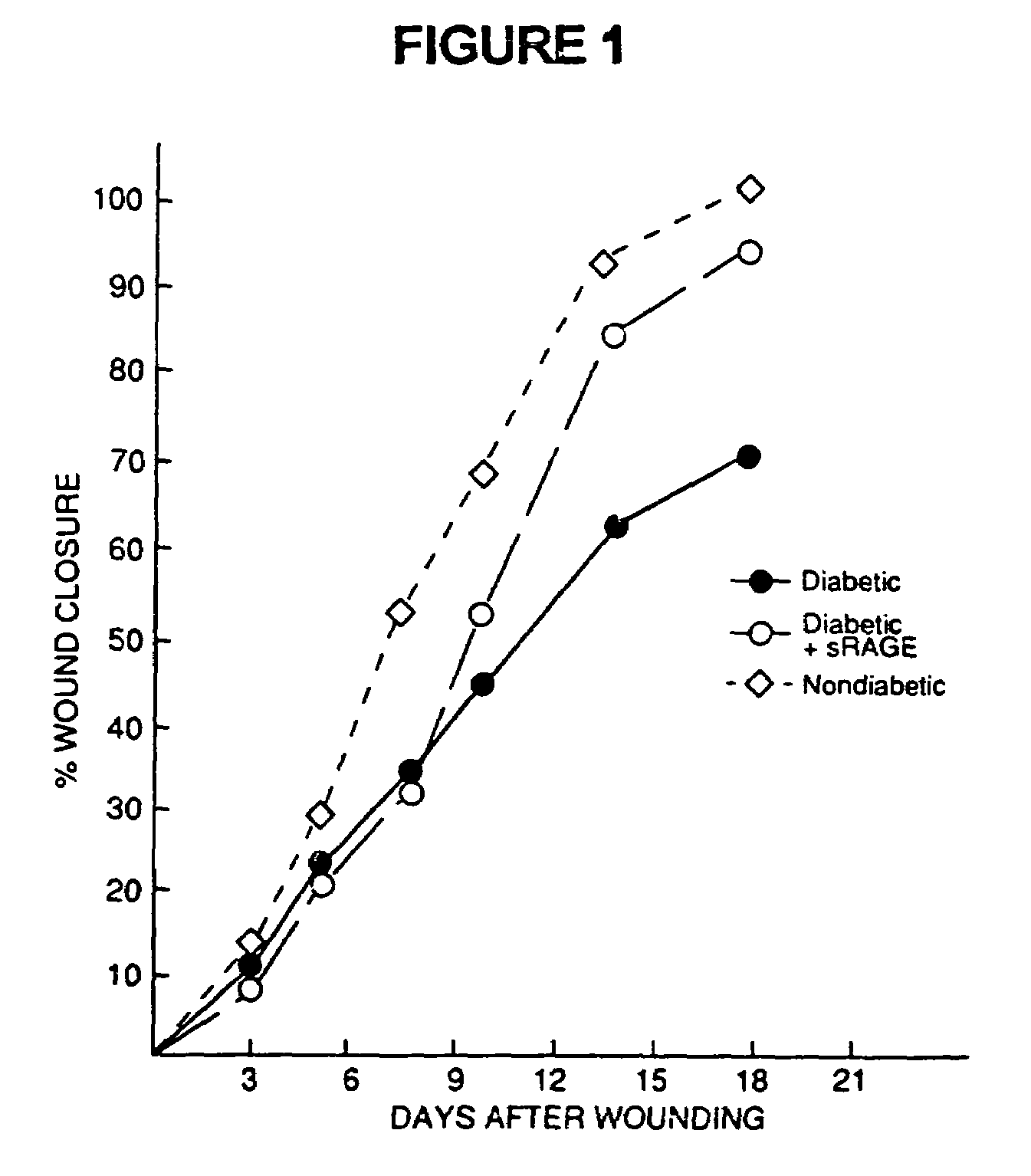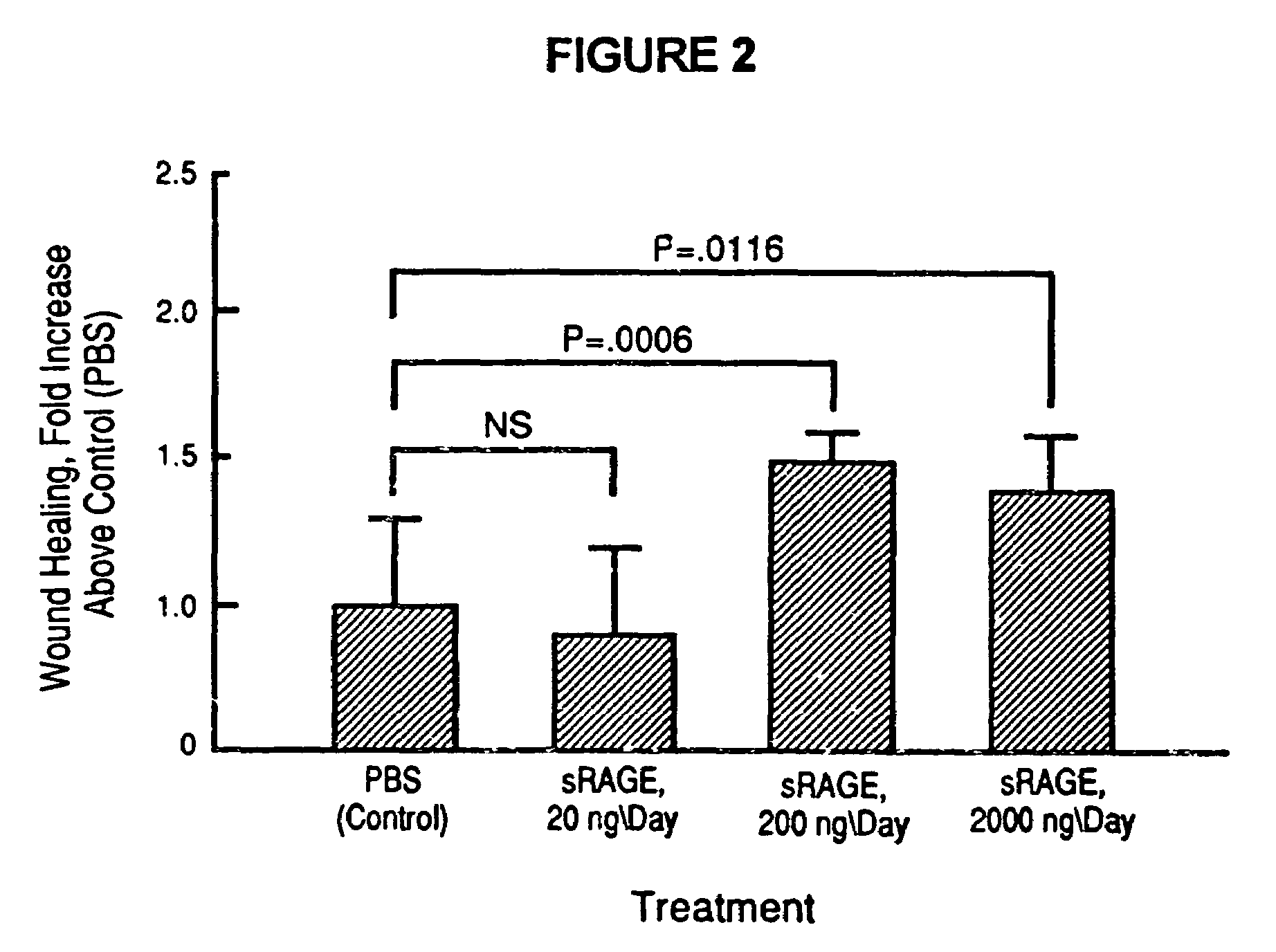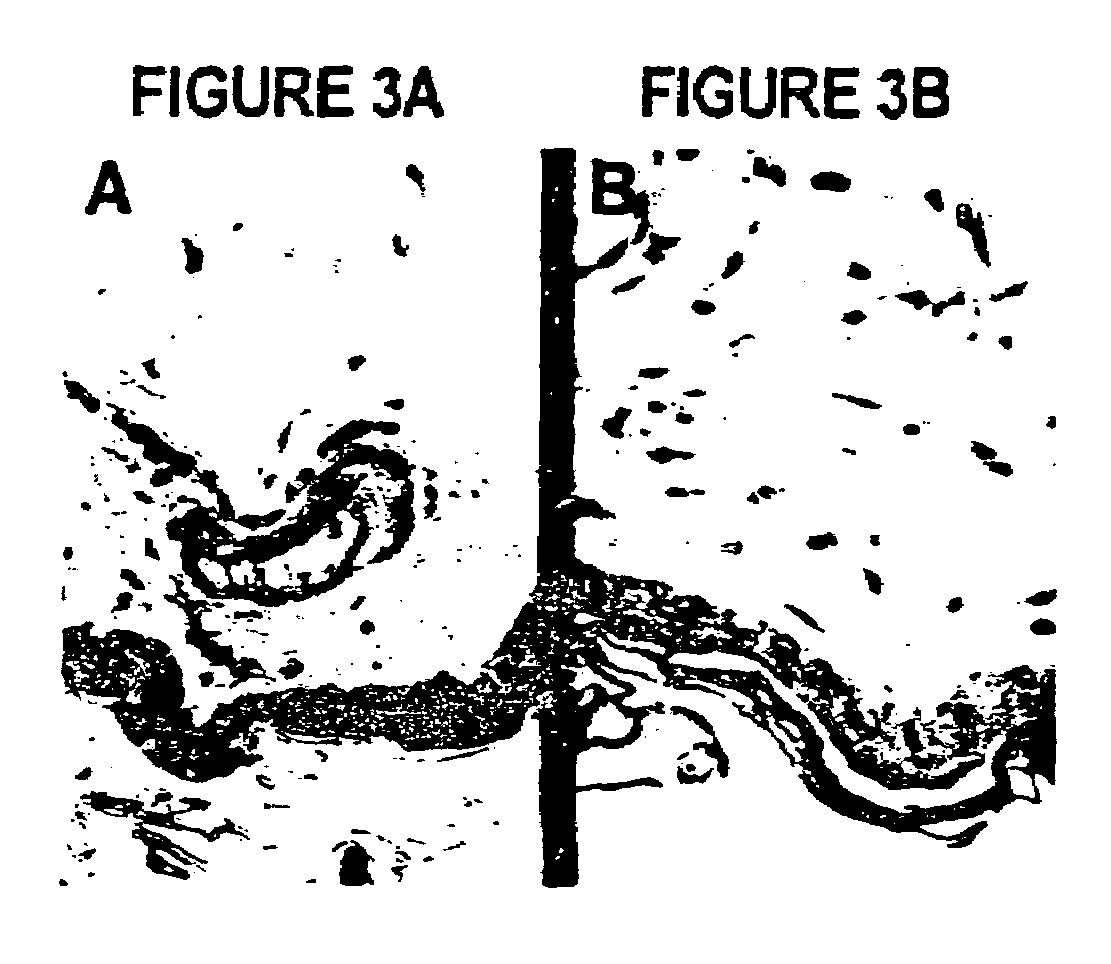Method for treating symptoms of diabetes
a diabetes and symptom technology, applied in the field of diabetes symptom treatment, can solve the problems of increased morbidity and ineffective wound healing
- Summary
- Abstract
- Description
- Claims
- Application Information
AI Technical Summary
Benefits of technology
Problems solved by technology
Method used
Image
Examples
example 1
Improved Wound Healing in Diabetic Mice by Treatment with the Soluble Receptor for Advanced Glycation Endproducts (sRAGE)
[0039]Defective wound healing in diabetes continues to be an important cause of morbidity in the postoperative period, following trauma, and in the repair of cutaneous lesions. Advanced Glycation Endproducts (AGEs) are the result of nonenzymatic glycation / oxidation of proteins / lipids. Accelerated formation and accumulation of AGEs in tissues of patients with diabetes has been linked, in certain situations, to the development of secondary complications. An important means by which AGEs perturb homeostatic processes is through their interaction with cellular binding sites; the best characterized of these is Receptor for AGE or RAGE, an immunoglobulin superfamily molecule expressed by endothelium, monocytes, and smooth muscle cells, as well as mesangial cells and neurons. AGE engagement of RAGE leads to endothelial activation, with expression of adhesion molecules, e...
PUM
| Property | Measurement | Unit |
|---|---|---|
| time | aaaaa | aaaaa |
| body weight | aaaaa | aaaaa |
| soluble | aaaaa | aaaaa |
Abstract
Description
Claims
Application Information
 Login to View More
Login to View More - R&D
- Intellectual Property
- Life Sciences
- Materials
- Tech Scout
- Unparalleled Data Quality
- Higher Quality Content
- 60% Fewer Hallucinations
Browse by: Latest US Patents, China's latest patents, Technical Efficacy Thesaurus, Application Domain, Technology Topic, Popular Technical Reports.
© 2025 PatSnap. All rights reserved.Legal|Privacy policy|Modern Slavery Act Transparency Statement|Sitemap|About US| Contact US: help@patsnap.com



